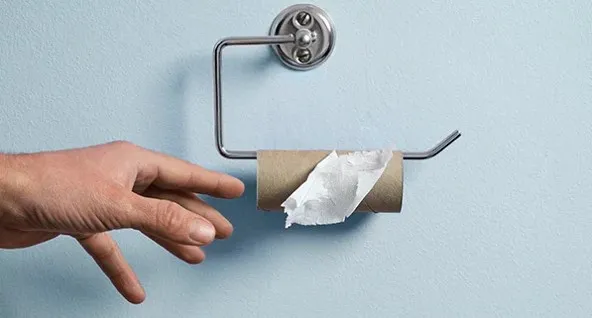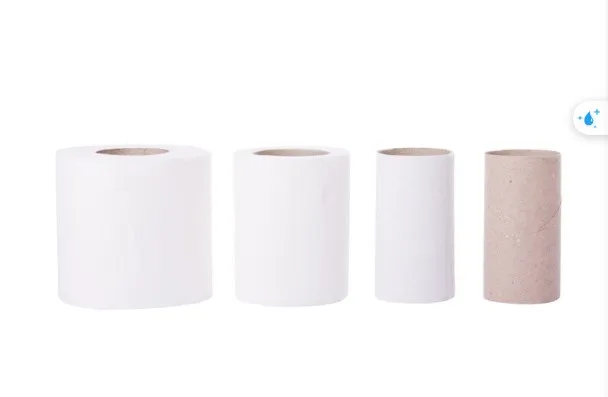If you’ve recently noticed that your toilet rolls seem smaller than they used to be, you’re not alone. Many consumers across the US have observed this change and are left wondering why their trusty toilet paper is shrinking. The reduction in size is not just a random occurrence but a calculated move influenced by several factors, including economics, manufacturing processes, consumer habits, and environmental concerns. In this article, we’ll dive deep into the reasons behind the shrinking toilet rolls and what it means for you as a consumer.

One of the primary reasons for the reduction in toilet roll size is economic. Over the years, manufacturers have faced increasing production costs, from raw materials to transportation. To maintain their profit margins without significantly raising prices, these companies have turned to downsizing their products—a practice known as “shrinkflation.” By slightly reducing the size of each roll, manufacturers can save on materials and production costs while keeping the product price relatively stable.
Shrinkflation is a strategy where the size or quantity of a product is reduced while the price remains the same. This subtle change allows companies to pass on increased costs to consumers without overtly raising prices. While shrinkflation is common in many products, from snacks to household goods, its impact on toilet paper is particularly noticeable. Consumers are now getting fewer sheets per roll or smaller sheet sizes, all while paying the same price as before.
Traditionally, a standard toilet roll had a diameter of around 4.5 inches. However, in recent years, this diameter has shrunk, with many rolls now measuring closer to 4 inches. While this may not seem like a significant change, it adds up over millions of rolls, allowing manufacturers to reduce costs subtly.
Another area where manufacturers have made cuts is in the number of sheets per roll. Where a roll once might have had 200 sheets, many now offer only 150. This reduction means that consumers go through rolls faster and need to purchase toilet paper more frequently—leading to increased sales for manufacturers without a corresponding increase in perceived cost.
Modern consumer habits also influence the shrinking size of toilet rolls. Many people today use toilet paper more efficiently, often folding rather than wadding, which means they use fewer sheets per visit. Recognizing this shift, manufacturers have adjusted the size of rolls to align with these more efficient usage patterns, ensuring that their products remain in line with consumer behavior.

In addition to changing usage patterns, there has been a growing demand for toilet paper that is softer and more absorbent. To meet this demand, manufacturers may use higher-quality materials that take up more space, necessitating a smaller roll size to maintain costs. This balance between quality and quantity has led to the smaller rolls we see today.
Environmental concerns are another factor driving the reduction in toilet roll size. As companies become more environmentally conscious, they seek ways to reduce waste and resource consumption. Smaller rolls can lead to less packaging waste and a decrease in the total amount of paper used, which aligns with broader sustainability goals.

Manufacturers are increasingly focused on creating products that balance performance with environmental impact. By reducing roll size, companies can lower their carbon footprint while still delivering a product that meets consumer expectations for quality and effectiveness.
Not all consumers are pleased with the shrinking rolls. Many feel that they are getting less value for their money, as they need to purchase toilet paper more frequently. This perceived loss of value has led to frustration among some consumers, who feel that they are being shortchanged.

In response to these concerns, manufacturers emphasize that the quality and functionality of their products remain unchanged despite the reduction in size. They argue that the improvements in softness, strength, and absorbency offset the smaller roll size, ensuring that consumers still receive a satisfactory experience.
As economic pressures, environmental concerns, and consumer habits continue to evolve, it’s likely that we will see further changes in the toilet paper industry. Manufacturers may continue to innovate, finding new ways to balance cost, performance, and sustainability. For consumers, staying informed about these changes can help make more conscious purchasing decisions.
The shrinking size of US toilet rolls is a complex issue driven by a combination of economic, environmental, and consumer factors. While some may view this change as a loss of value, manufacturers argue that it is a necessary adjustment to keep up with rising costs and changing consumer demands. As we move forward, it’s important to recognize the balance between maintaining product quality and addressing broader economic and environmental challenges.


